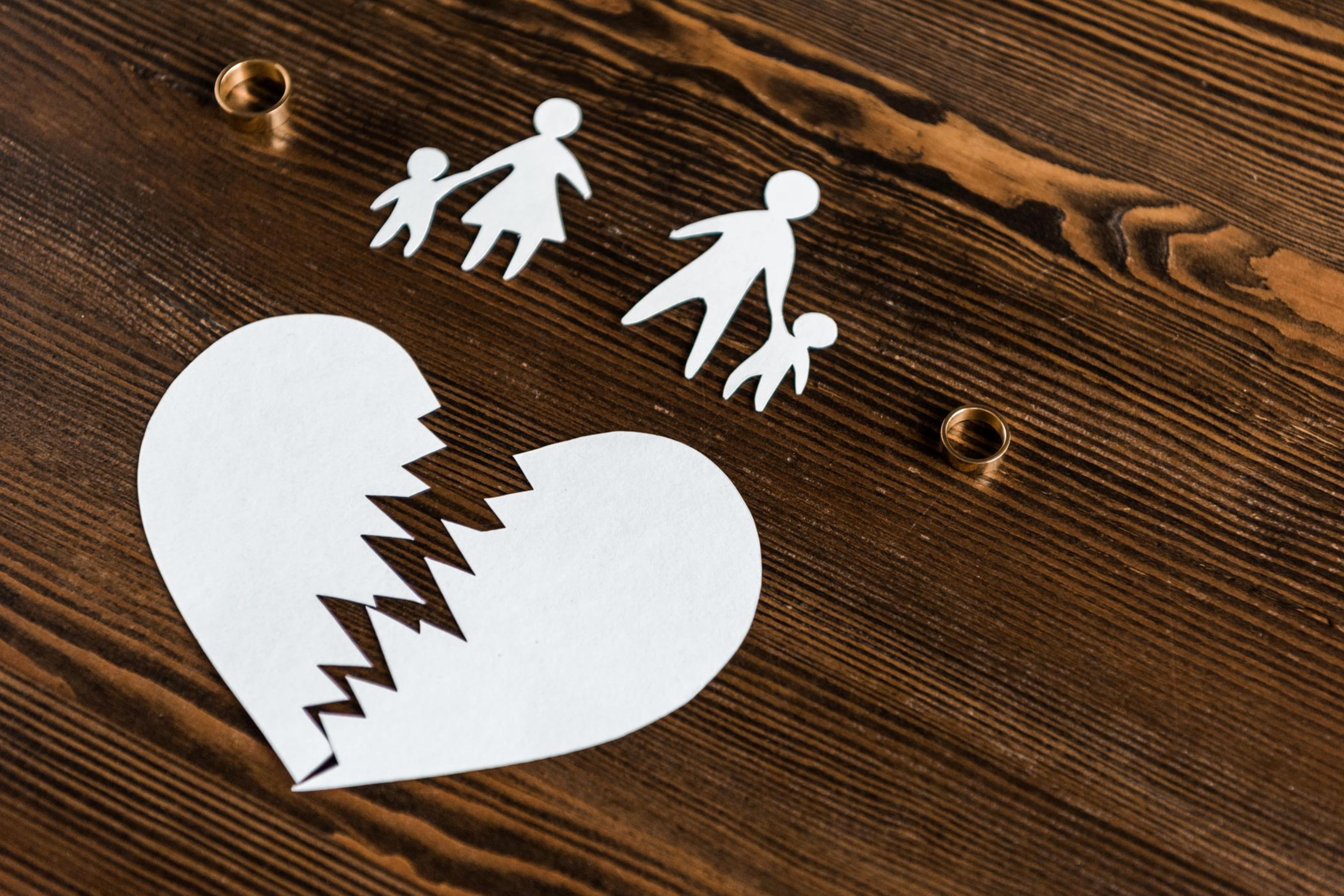In a world increasingly vocal about mental health and relationships, understanding emotional abuse remains paramount. The insidious nature of emotional maltreatment, often harder to identify than physical scars, continues to silently harm countless individuals. As awareness grows, so does the quest for freedom and self-reclamation, which can sometimes mean cutting ties with the very person once thought to be a soulmate.
If you find yourself pondering the need to distance yourself from an emotionally abusive spouse, you’re not alone. Let’s dive deep into the journey of leaving behind a toxic relationship and finding the peace you deserve.
While the path to freedom can be complex and filled with obstacles, knowledge is power. By equipping oneself with essential steps, recognizing the subtle signs, and seeking trusted support, the journey becomes more manageable. Let’s break down these phases step by step.
1. Recognizing the Signs
Every journey starts with an understanding. Before making any significant decisions, you need to determine whether you’re indeed in an emotionally abusive relationship. Emotional abuse can be subtle, unlike its physical counterpart.
Signs of Emotional Abuse
- Belittling or constant criticism.
- Jealousy and accusations without reason.
- Withholding affection as punishment.
- Mockery and humiliation.
- Isolation from friends and family.
- Controlling behavior over finances or personal choices.
- Ignoring or denying your feelings.
- Research on emotional abuse
2. Planning Your Exit Strategy
Planning is paramount when it comes to leaving any relationship, especially an emotionally volatile one. Ensure your safety and prepare your mindset for the transition.
Steps for a Safe Exit
- Confide in Trusted People: Share your intentions with friends or family who can offer support and shelter.
- Save Money: Start a separate bank account and gather funds.
- Gather Essential Documents: Birth certificates, passports, marriage licenses, and bank statements should be accessible.
- Seek Legal Advice: Consult an attorney for guidance.
- Establish a Support System: Connect with therapists or counselors who can guide you through the emotional transition.
- Study on the importance of preparation during divorce

3. Navigating the Legal Process
Divorcing is as much an emotional process as it is a legal one. Understanding the legal aspects can help lessen the emotional strain.
Comparison Table: Mediation vs. Litigation
[table id=436 /]
Research on mediation and litigation comparison
4. Healing and Moving On
Lastly, while the steps to divorce may be over, the journey towards healing is just beginning. It’s essential to give yourself grace and patience.
Steps Towards Healing
- Seek professional therapy or counseling.
- Engage in self-care practices.
- Reconnect with hobbies or interests you’ve sidelined.
- Surround yourself with positive, supportive people.
- Set boundaries and prioritize your emotional well-being.
- Study on post-divorce healing and mental health
5. Educating Yourself
Knowledge is one of the best tools at your disposal. Arm yourself with information not only about the divorce process but also about emotional abuse. By understanding the mechanisms and tactics of abuse, you can be better prepared for potential reactions from your spouse.
Reading Recommendations
- Books on Emotional Abuse: Delve into literature that offers insights on manipulation, gaslighting, and other abuse techniques.
- Legal Rights: Understand your rights concerning shared properties, custody (if you have children), and financial assets.
- Support Groups: Many organizations offer programs or meetings for those going through emotional abuse.
- Online Communities: Forums and support groups can provide shared experiences, offering solace in knowing you’re not alone.
- Research on the benefits of being informed during traumatic experiences

6. Rebuilding Social Ties
Often, emotional abusers try to isolate their victims from friends and family, breaking their support system. As you begin your new life, it’s time to rebuild these crucial connections.
- Steps to Rebuild Connections
- Reach out to old friends and explain your absence.
- Join clubs or organizations aligned with your interests.
- Volunteer for causes close to your heart.
- Attend therapy or counseling groups.
- Travel, if possible, to meet different people and cultures.
- Study on the importance of social ties post-trauma
7. Self-Reflection and Growth
The journey of divorcing an emotionally abusive spouse doesn’t end with signing papers. It’s also about self-reflection and growth. Use this period as a turning point to redefine who you are and what you want from life.
Comparison Table: Before vs. After Self-Reflection
[table id=437 /]
Research on the role of self-reflection in trauma recovery
In wrapping up, it’s essential to remember that the journey to separate from an emotionally abusive partner is deeply personal. There’s no one-size-fits-all approach. What remains consistent is the need for compassion, patience, and understanding towards oneself. Each step, no matter how small, is a stride toward a brighter, healthier future. Your well-being is worth every effort, and a life free from emotional shackles awaits.
The Dangers of Divorcing an Emotionally Abusive Spouse
Divorcing an emotionally abusive spouse is a courageous step towards reclaiming one’s peace, freedom, and well-being. However, it’s crucial to understand that the path to severing such ties can come with a range of dangers. Emotional abuse, while less visible than physical abuse, is no less destructive or risky, especially when ending the relationship.
Escalation of Abuse
One of the primary dangers is the escalation of abuse. When an abuser senses they are losing control, they may intensify their manipulative tactics. This could manifest as intensified verbal abuse, threats, or even physical violence. The abuser might attempt to invoke guilt, shame, or fear, using phrases like “You’ll regret this” or “You’ll never find someone like me.”
Stalking and Harassment
Post-separation, there’s a risk of stalking and persistent harassment. The abusive partner may feel the need to continue exerting control or seek revenge. This behavior might involve tracking the victim’s movements, incessant phone calls, messages, or even showing up at their workplace or new residence unannounced.
Manipulation of Mutual Ties
Emotionally abusive individuals are often skilled manipulators. They can twist narratives and play the victim card, portraying themselves as the wronged party. Mutual friends, family, or even children can be weaponized in their attempt to gain sympathy or discredit the real victim.
This not only further isolates the victim but can also have serious implications in legal battles, like child custody disputes.
Financial Repercussions
Financial abuse is a form of emotional abuse. An abusive spouse might have controlled the family finances, leaving the victim with limited resources or knowledge about their monetary assets. During a divorce, the abuser might hide assets, deny financial support, or create debt, making the process more strenuous and challenging.
Emotional Blackmail
An emotionally abusive spouse may resort to emotional blackmail, especially if they perceive that the victim is gaining the upper hand. They might threaten self-harm or even suicide, saying things like, “If you leave, I’ll kill myself.” Such statements are manipulative tactics designed to trap the victim in the relationship out of guilt or fear.
When to Seek Help from the Police or Authorities
Given the potential dangers, it’s crucial to recognize when situations escalate beyond personal control, necessitating intervention from law enforcement or other authorities.
- Physical Threats or Violence: If the abusive partner resorts to physical violence or threatens it, it’s crucial to contact the police immediately. Physical safety is paramount, and no one should have to endure physical harm.
- Stalking: If you notice you’re being followed, receive constant unwanted messages, or find the abuser unexpectedly at your locations, this constitutes stalking, and legal action should be considered.
- Child Safety Concerns: If children are involved and their safety is at risk – whether emotionally, physically, or psychologically – authorities should be informed. Children’s well-being is paramount, and in many jurisdictions, there are strict laws to protect minors from abuse.
- Threats of Self-harm or Suicide: While manipulative, any threat of self-harm or suicide should be taken seriously. It’s essential to contact local authorities or emergency services if immediate harm seems likely.
- Breach of Restraining Orders: If a restraining order or protection order has been issued and the abusive partner violates it, contact the police immediately. Such orders are legal instruments, and their breach has legal repercussions.
- Cyberbullying or Digital Harassment: With the rise of technology, abusive spouses might resort to online platforms for harassment. From revenge porn to slanderous posts, digital harassment is real and can have severe emotional consequences. Inform the police, especially if the actions breach local cyberbullying or digital harassment laws.
Conclusion
While the journey of divorcing an emotionally abusive spouse is fraught with potential dangers, it’s a necessary path for many to regain control of their lives. Knowledge, preparation, and timely intervention can make this process safer.
It’s always recommended to consult with local domestic violence organizations or professionals who can provide guidance, resources, and support during this challenging transition.
[wp-faq-schema title=”Frequently Asked Questions”]
